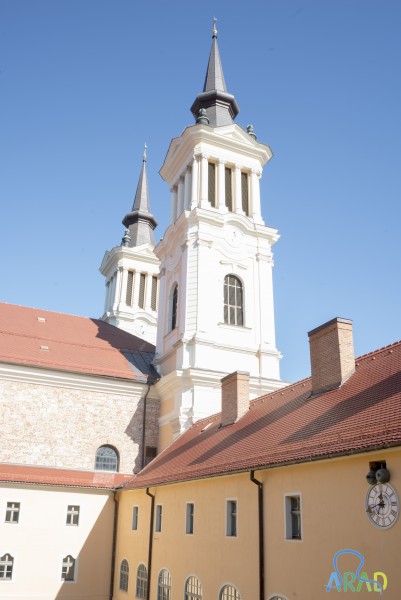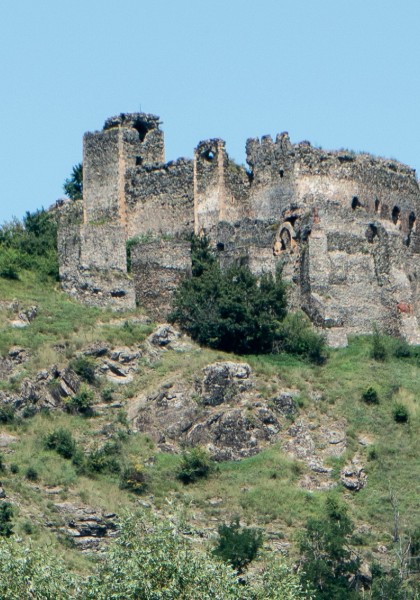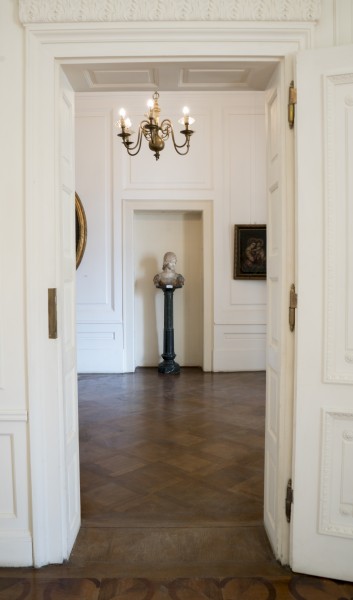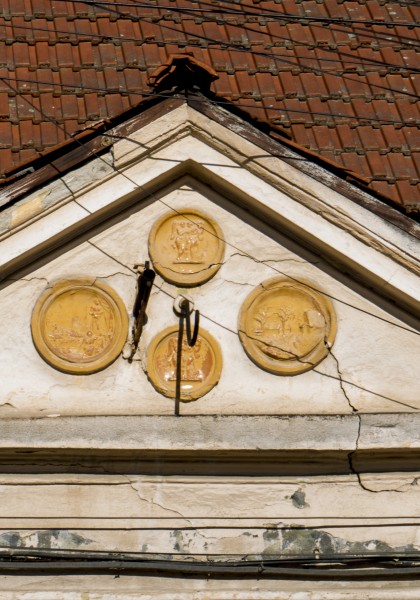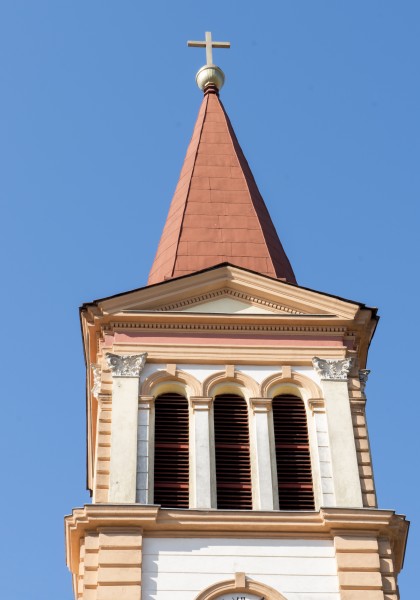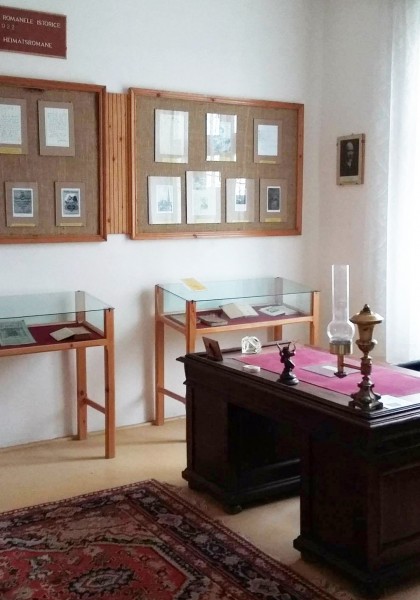Arad - The Maria Radna Basilica - 34 km
Time – 40 minutes
The Maria Radna Basilica
Address: Avram Iancu Square, no. 1, Lipova
Contact: 0257/563092, maria.radna@yahoo.de
In 1520 a devoted widow builds the first chapel on the hill of Radna. In 1551 the Turkish rule beings, lasting until 1716. In 1642 Father Andrija Stipančić, Franciscan priest at Radna, manages to receive an „Embre“ (a decree) by the Sultan for the renovation of his chapel after paying a bribe and having walked the long and exhausting distance by foot to Constantinopel and back. In 1668 the chapel of the Franciscan friars receives an icon from the workshop of the typographer Remondini (of Bassano del Grappa, Vicenza province, northern Italy), depicting the Madonna in her scapular. This is the miraculous image that is being worshiped to this day. In 1695 the Turkish soldiers set fire to the Franciscan chapel. The church burns in a sea of flames but the icon remains undamaged.
According to another legend, the hoof of a Turkish soldier´s horse, riding up the hill to the church, got sunk into a stone, and he could not continue his ride.
The stone with the hoofmark and the painting on the right hand side wall of the church draw impressive attention thereon. In 1723 a new and larger church is built. In 1756, at Pentecost on July 7, the foundation stone for a new church in Maria Radna was laid since the old house of prayer soon proved to be too small. This church is still standing today. In 1911 the two church towers are being raised by 30 meters under the control of Father Augustinus Prieszter OFM to a total height of 67 meters. He also renews the Stations of the Cross on the path of pilgrimage behind the church. In 1992 Pope John Paul II bestows the title „Basilica Minor“ to the church of pilgrimage of Maria Radna. In 2013 the whole estate, classified as a category A historical building, underwent a complete renovation in the framework of an EU-aided project. With Maria Radna as a flagship, the project aimed at developing cultural tourism and the economic infrastructure in the vicinity and at positioning the church and monastery into the touristic cycle.
The Maria Radna Basilica – The Turkish Bazaar – 2 km
Time: 10 minutes
The Turkish Bazaar
Address: Nicolae Bălcescu Street, Lipova
The bazaar „Sub dughene”, known also as the Turkish Bazaar in Lipova, is unique in Romania. Built by the ottomans, four centuries ago, the bazaar had a commercial purpose.
The facade has eight cylindrical pilasters, connected by arcades that „guard” a commercial passage. In the center, the construction is dominated by a triangulum frontispiece.
The Turkish Bazaar – The Town Museum from Lipova – 1 km
Time: 5 minutes
The Town Museum from Lipova
Address: Nicolae Bălcescu Street, no. 21
Contact: 0257563303, 0744220259
Today, the Sever Bocu mansion houses the town Museum from Lipova. The house belonged to the politician Sever Bocu in the period between 1922 – 1953. The inside of the building is elegantly and harmoniously decorated.
Five rooms of the permanent exhibition still keep the lavish interior design ordered by Bocu: the floor with intarsias, the Viennese tile stoves, the crystal chandeliers and mirrors, pieces of furniture. In display there is the art collection donated to the museum by the Eleonora Costescu and Vasile Varga family, in 1980: the Romanian modern painting (Ion Andreescu, Nicolae Tonitza), the painting from the Flemish, Italian, English, French and Hungarian schools and also pieces of decorative art (silverware, porcelain, glassware).
The Town Museum from Lipova – The Romanian – Catholic Church: 1 km
Time: 5 minutes
The Romanian – Catholic Church
Address: 9 Mai Street, no. 2, Lipova
Contact: 0257561238
In 1724, 180 families of catholic Germans from Bavaria, were brought to Lipova to colonize this region. The church and the school were the first institutions that organized themselves within the German ethnicity.
Around the year 1880 the construction of the actual church began, next to the German school, that was built there in the year 1819.
The Romanian – Catholic Church – The Șoimoș Fortress: 4 km
Time: 10 minutes
The Șoimoș Fortress
The ruins of the fortress are located on the ”Cioaca Tăutului” hill, 2 kilometers North-East of Lipova, at an elevation of 129 meters.
The Șoimoș Fortress is first mentioned in documents dating from 1278. Around 1440-1446 the fortress was rebuilt from the ground up by Iancu of Hunedoara. During 1552-1699 the fortress plays an important part in the defensive battles of the Romanian Countries against the Ottoman invaders, being lost and reconquered many times. In 1599-1600 it belonged to Mihai Viteazul. During the 18th century the fortress lost its military importance and in 1788 the garrison abandones it, thus falling into ruin.
The Șoimoș Fortress – The Adam Müller Guttenbrunn Museum: 17 km
Timp aproximativ: 20 minute
The Adam Müller Guttenbrunn Museum
Address: DJ 682, Zăbrani
Contact: 0741126501 – Dora Muntean
The permanent exhibition ,, Adam Muller Guttenbrunn ,,opened in 1970, into a building that was renovated in 1995, shows writer,s life and work (1852-1923), considered the most important german novelist from Banat, founder of the first popular theater from Vienna; the exhibits show his eventful childhood, his study years from Timișoara and Sibiu, but also his literary beginnings.
The biggest part of the exposition is dedicated to the works that have been inspired from the social and past life of german population from Banat, among them we mention : "Der klein Schwab"(the little swab) "Meister Jacob und seine Kinders" (Master Jacob and his children). The exhibition also presents some original objects of the writer, like his working table and his armchair.
Near the museum, in Zăbrani, it is also located the Adam Muller Guttenbrunn memorial house, where the famous writer was born. The place is marked with a comemorative plaque.
The Adam Müller Guttenbrunn Museum – Arad: 27 km
Estimated time: 40 de minute
Total distance: 86 km
Total duration of trip: 6 hours
